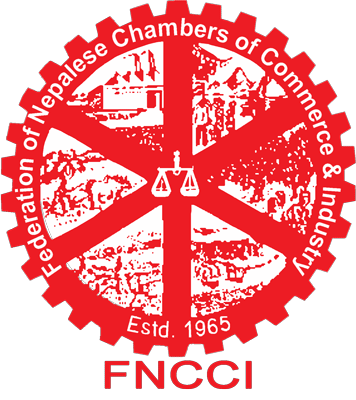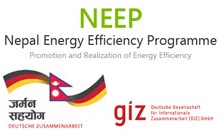Case For Establishment Of En Energy Conservation Fund For Nepalese Industry Sector
The opportunity for energy saving in Nepalese Industry is considerable. However, the actual savings remain far below the potential due to a number of barriers, finance being a major one. Case for establishment of a dedicated Energy Conservation Fund exists. Such a fund could foster the industrial energy efficiency (EE) market transformation, through measures like:
- Awareness raising and Institutional capacity building among key stakeholders like Ministry of Energy, Ministry of Industry, sectoral associations, service providers, financial sector stakeholder, and consulting fraternity, to design, administer, monitor, and follow up potential energy conservation schemes, addressing sector level, unit level and cluster level action agenda.
- Helping to create and manage a comprehensive and dependable baseline energy consumption data; through surveys, studies, so that benchmarks are set for specific energy consumption (SEC) in various sectors, and interventions identified for improving energy efficiency in different sectors.
- Alleviating the power shortage related impacts on economy through incentive schemes for cogeneration and other such relevant measures.
- Facilitating industry adoption of International standards like ISO 50001, Good Manufacturing Practices, ISO 14000, Voluntary carbon standards on emission reduction, through capacity building and incentive schemes.
- Facilitating expansion of Energy Efficiency markets by schemes for energy auditor and energy manager capacity building, sector specific award schemes, best practice documentation/dissemination.
- Building capacity of local financial institutions to increase their knowledge, interest, and capability for financing EE projects and leverage commercial funds to create a sustainable market for project financing.
- Facilitating development of technical specifications, Minimum energy performance standards, typical financing agreements, performance contracts that can be useful to industry sector.
- Incentivizing the financing of lighthouse type game-changing EC projects in association with development partners and international organizations like UNIDO, UNDP and UNEP.
-
Facilitating financing projects through energy service delivery organizations.
Fund size and administration procedures are key factors in meeting the scope and objectives among the above wish list. Going by successful instances of energy conservation funds established in Asian region, Europe as well as USA, a similar initiative could auger well in Nepalese context because of the given energy shortfall situation and industry sector energy needs as a growth engine for Nepalese economy.
Energy Efficiency Policy - Asian Experience
Energy efficiency plays nowadays an important in the context of energy policy of many developing. The reason for that is: energy efficiency is a win-win situation. Among the range of technology options that exist, energy efficiency approaches are the most cost competitive because it is cheaper to save than to generate energy. Developing country's energy demand is raising at a very fast rate. The expansion of the energy generation sector often lags behind rapid demand growth which lead to scarcity of energy and power deficit. Many developing countries have no or limited traditional energy resources like fossil fuels and have to import those at rising prices. Experiences have shown that energy, although expensive and limited, is often not used efficiently. Lack of awareness and knowhow are the reasons for wastage. Therefore, government intervention is needed to foster energy efficiency (EE). Robust deployment of EE interventions can help to reduce the need for energy imports, thereby conserving domestic expenditures for alternative investments in education, health care, and other amenities.
Experiences from Asia
Many countries in Asia have already started EE interventions guided by energy efficiency policies. In India, the Energy Conservation Act of 2001 is the national strategy to lower the energy intensity of the country's economy. The Bureau of Energy Efficiency (BEE) was established as national agency for carrying out EE intervention. BEE has been engaged in activities such as the drafting of building codes, energy performance labeling requirements, standards for appliances and products, and certification and accreditation for energy managers and auditors. Since January 2010, mandatory labeling has been applied to room air conditioners, frost-free refrigerators, distribution transformers, and tubular fluorescent lamps. By national regulation energy-intensive industries in India are obliged to conduct energy audits in their production facility on a regular basis and implement energy saving options.
In Indonesia, the Directorate General of New Renewable Energy and Energy Conservation was created in 2010 to engage policy and regulatory development and to advocate for EE. The Energy Efficiency and Conservation Clearing House Indonesia was created as a central source of information and best practice on EE. The government also started to enforce regulations mandating EE programs by large public and private energy consumers aiming to curtail energy use equal to the output of a 2,000-megawatt power plant.
In Thailand, the Energy Conservation Promotion Act of 1992 was the first step towards energy conservation as part of national policy. National funds to support demand-side initiatives in the sector are channeled through the Energy Conservation Promotion Fund, known as ENCON. This funds support, for example, Energy Service Companies (ESCOs) in order to reduce the financial and technical risks of EE projects in the private sector. In 2002, an Energy Efficiency Revolving Fund was established, also with funding from ENCON, to facilitate the involvement of the commercial finance sector in the provision of loans for EE projects. Thailand's 20-Year Energy Efficiency Development Plan, spanning 2011 to 2030, promotes energy savings with an emphasis on the industry and transport sectors. Large energy companies will be required to implement Energy Efficiency Resource Standards, with Minimum Energy Performance Standards to be developed for buildings, vehicles, and appliances. A Demand-Side-Management (DMS) bidding program offers subsidies for verified energy savings achieved by large businesses, and for verified energy savings or peak load reductions achieved by small and medium-sized enterprises.
Conclusion
Main areas of EE intervention of Asian government include:
(1) EE policy and regulation,
(2) EE standards and building codes,
(3) utility DSM market activities,
(4) innovative financing mechanisms,
(5) development of national and/or local institutional capacity,
(6) EE information systems,
(7) awareness of EE means and benefits.
Throughout Asia and the world, a critical emerging need exists for energy solutions that at the same time conserve economic and environmental resources. EE initiatives are already delivering this value. However, it is now the time to be more ambitious and drive the widespread deployment of such initiatives on national, regional and international level.
References:
Asian Development Bank (ADB), 2013. Same Energy, More Power - Accelerating Energy Efficiency in Asia.



